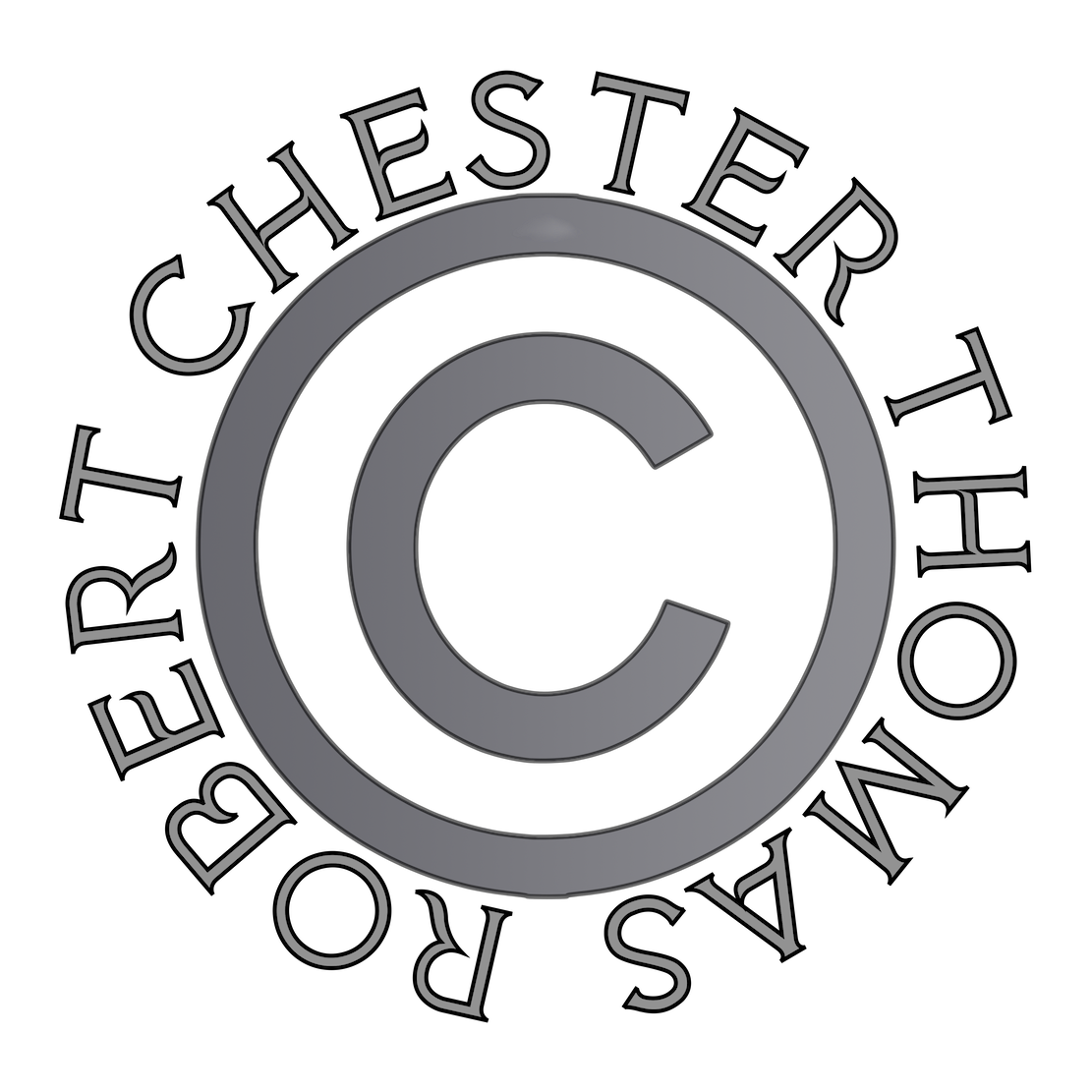
|
|
home page |
|
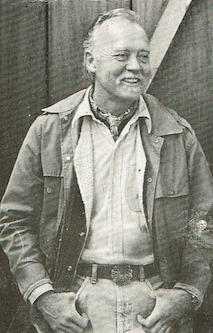
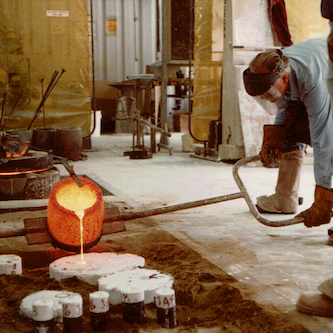
Former Foundry UCSB Studio Art Department
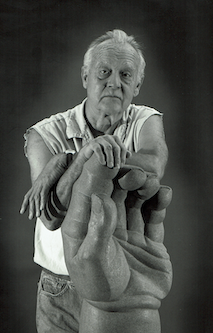
Welcome to the Robert Chester Thomas website. We are his daughters, Robin Thomas and Elizabeth Alix. This site has been created to reintroduce our father through a brief biography and to show his works.
Robert Chester Thomas was born in Wichita, Kansas in April 1924. His father was a butter maker and his mother took in sewing. In 1928, his brother was born. Sometime later, they moved to the warmer climate of Los Angeles for his father's health. His father died of lockjaw (tetanus) in 1935, after cutting his finger at work.
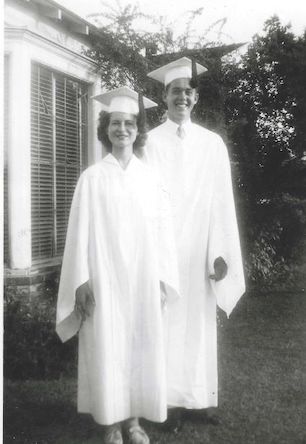 Our father didn't talk much about his childhood. What we
know above was researched by his younger brother, our uncle Don. What we
know from family lore didn't start until dad was in junior high school
in Downey, California, where he met our mother Eleanor. By the time they
were high school sophomores, our parents were sweethearts, and they
stayed so until dad died in 1987. In high school, dad was with a swing
combo called The Four Barons, playing clarinet, saxophone, and vocals.
Dad also played tennis and mom was on the school
newspaper.
Our father didn't talk much about his childhood. What we
know above was researched by his younger brother, our uncle Don. What we
know from family lore didn't start until dad was in junior high school
in Downey, California, where he met our mother Eleanor. By the time they
were high school sophomores, our parents were sweethearts, and they
stayed so until dad died in 1987. In high school, dad was with a swing
combo called The Four Barons, playing clarinet, saxophone, and vocals.
Dad also played tennis and mom was on the school
newspaper.
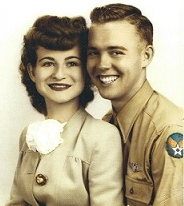 Dad enlisted in the army
in 1943. Our parents were married in 1944, and mom followed dad through
his postings in the US. Mom returned to Downey when dad was posted
overseas, serving part of his time in Germany as an MP.
Dad enlisted in the army
in 1943. Our parents were married in 1944, and mom followed dad through
his postings in the US. Mom returned to Downey when dad was posted
overseas, serving part of his time in Germany as an MP.
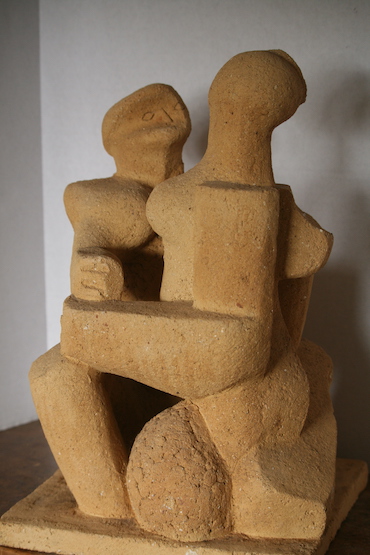 We don't know when dad became interested in art.
At one time, mom said that he took a correspondence course while in the
service, but we don't know that she was serious. We do know that after
returning to civilian life, he studied sculpture with David Green in
Pasadena (1946-47). In 1948, taking advantage of the GI Bill, they moved
to Paris so dad could study with Ossip Zadkine. In the summer of 1949,
Art News magazine did a short article about the 208 GIs studying art in
Paris, and dad was among the young artists pictured in the article.
Galerie St. Placide had an exhibit of their work, displaying the best 24
of 60 artists who applied. Dad's work was among them. While dad studied,
mom worked as a secretary for an American firm.
We don't know when dad became interested in art.
At one time, mom said that he took a correspondence course while in the
service, but we don't know that she was serious. We do know that after
returning to civilian life, he studied sculpture with David Green in
Pasadena (1946-47). In 1948, taking advantage of the GI Bill, they moved
to Paris so dad could study with Ossip Zadkine. In the summer of 1949,
Art News magazine did a short article about the 208 GIs studying art in
Paris, and dad was among the young artists pictured in the article.
Galerie St. Placide had an exhibit of their work, displaying the best 24
of 60 artists who applied. Dad's work was among them. While dad studied,
mom worked as a secretary for an American firm.
He continued his education upon returning to the US, moving to Santa Barbara to get his BA at the University of California in 1951. They then moved to Berkeley, where at 25 he studied, and got his MFA, at the California College of Arts and Crafts. He taught there for a year before returning to Santa Barbara.
Dad joined the University of California Santa Barbara College faculty in 1954 and taught until his death in 1987. Of his teaching methods, his colleague Sheldon Kaganoff noted in dad's Memoriam: "While he could express himself in writing passionately, he nevertheless was extremely hesitant to "talk" art; he preferred practice to talk. His priorities were apparent by the lack of chairs in his teaching studio: the studio was a place to act, to work, not talk. Thomas emphasized technique, so that students would then be free to explore the broad range of their creative ideas."
In a 1956 Santa
Barbara News Press article about dad, his teaching technique was
described: "His beginning students are given a series of formalized
problems to familiarize them with three dimensional shapes. Later in
the course they work from the figure by drawing and modeling. Advanced
sculpture students are required to complete four to eight major
projects of their choosing in various sculptural media."
Los Angeles Times art critic Henry Seldis, in a letter supporting dad's
professorship, noted "I am glad to note that rather than impose his own
artistic visions and techniques on those he teaches, he makes it
possible for them to arrive at a convincing idiom of their own."
His influence was not limited to his students. The artist Marc di
Suvero, although he did not study with dad, credited his decision to
become a sculptor to dad. They became fast friends and corresponded
until dad's death.
In 1965, he and
Conway Pierson accompanied David Gebhard to Fate Bell Cave on the Rio
Grande to record, through watercolors and photography, the Native
American cave paintings for Gebhard's report to the National Park
Service.
During his career, dad's work was represented by and displayed in the
Esther Robles Gallery (Los Angeles), the Esther Bear Gallery (Santa
Barbara), the Adele Bednarz Galleries (Los Angeles), the Meredith Niles
Gallery (Santa Barbara), the Bradley Galleries (Santa Barbara), and
Delphine Gallery (Santa Barbara). He showed in many galleries in
California, Washington, and Paris (while studying there), and in many
art shows throughout the Western US. His biographical sketch appeared in
Dictionary of Contemporary American Artists (1977), Who's Who in
American Art (1982), and Who's Who in the West (1989/1990). In October of
1987, dad passed away while playing squash with one of his graduate
students. During the game he suddenly dropped to the floor from a
massive heart attack. He had never had any symptoms and had just passed
a physical exam. The doctor said he was probably dead before reaching
the floor. There was a bit of comfort in knowing he was doing something
he enjoyed. Mom survived dad by 34 years. 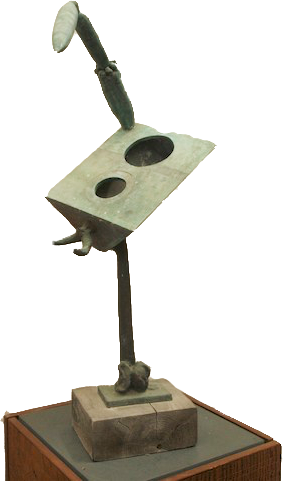 Reviews of dad's art from
early to mid 50s mention pieces in marble, wood, terracotta, greenstone,
bronze, iron, and firebrick. But his abstracts of welded steel are most
mentioned and admired.
Reviews of dad's art from
early to mid 50s mention pieces in marble, wood, terracotta, greenstone,
bronze, iron, and firebrick. But his abstracts of welded steel are most
mentioned and admired.
By 1960 he was favoring bronze. With fellow professors Conway Pierson
and Steve Werlick, he began designing a foundry at UCSB in order to cast
their own bronze sculpture and pottery. In 1960-61, dad (and us) took a
sabbatical in Paris to learn more about casting. Once built, the foundry
took six months of arduous testing and adjusting, but gave them much
more control using a foundry specifically designed for casting
sculpture. The foundry was soon expanded to allow the casting of
sculptures up to 250 pounds.
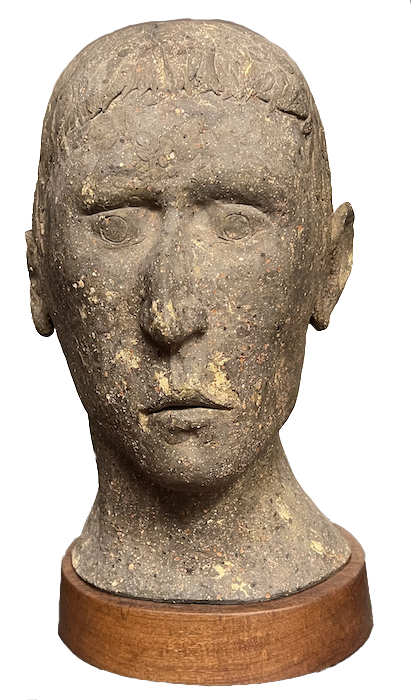 In the late sixties, he began working in glazed and
unglazed clay, making a series of small reliefs. He continued creating
reliefs in bronze, aluminum, and wood. In the seventies he began working
in granite, marble, and molded stone, creating busts, hands,
semi-abstract torsos, and animals. We spent 1972-73 on sabbatical in
Florence, where he worked on small bronze figures (it was expensive to
send large bronze pieces back to the States). In the late seventies, he
was working on a series of abstract stick figures in bronze, some
incorporating objects from nature.
In the late sixties, he began working in glazed and
unglazed clay, making a series of small reliefs. He continued creating
reliefs in bronze, aluminum, and wood. In the seventies he began working
in granite, marble, and molded stone, creating busts, hands,
semi-abstract torsos, and animals. We spent 1972-73 on sabbatical in
Florence, where he worked on small bronze figures (it was expensive to
send large bronze pieces back to the States). In the late seventies, he
was working on a series of abstract stick figures in bronze, some
incorporating objects from nature.
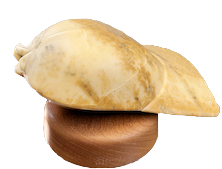 Dad didn't settle on any one art medium. He worked in a
variety of materials, using different techniques to shape the objects.
He worked in a variety of genres, abstract to representational. In an
introduction to a retrospective of dad's work, Henry Seldis said:
"Because of his strong urge to explore every avenue of his art and
craft, [he] presents us with many well-mastered techniques of sculpture
but with varied creative concepts that give [his work] a vigorous
diversity without making it in any way eclectic."
Dad didn't settle on any one art medium. He worked in a
variety of materials, using different techniques to shape the objects.
He worked in a variety of genres, abstract to representational. In an
introduction to a retrospective of dad's work, Henry Seldis said:
"Because of his strong urge to explore every avenue of his art and
craft, [he] presents us with many well-mastered techniques of sculpture
but with varied creative concepts that give [his work] a vigorous
diversity without making it in any way eclectic."
We hope you've
enjoyed the website and the art. Should anything strike your fancy, use
the "inquire" button available on each art page.
Dad's art is represented in Santa Barbara, California by:
Robin Thomas
Elizabeth Alix
